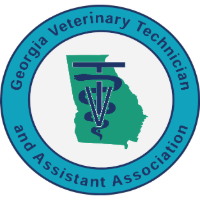Licensed Veterinary Technician Resources
Scope of Practice for Veterinary Technicians
-
(1) Immediate Supervision means that the duly licensed veterinarian is in audible and in visual range of the animal patient and the person treating the animal.
(2) A veterinary technician working under the direction, supervision and control of a duly licensed veterinarian may provide the following animal patient care under immediate supervision:
(a) Surgical assistance.
-
(1) Direct supervision means that the duly licensed veterinarian is on the premises and is quickly and easily available and that the animal patient has been examined by a licensed veterinarian at such time as acceptable veterinary medical practice requires, consistent with the particular delegated animal health care task.
(2) A veterinary technician working under the direction, supervision and control of a duly licensed veterinarian may provide the following animal patient care under direct supervision:
(a) Euthanasia;
(b) Administration of blood or blood components to animal patients;
(c) Application of splints and slings;
(d) Dental procedures including, but not limited to the removal of calculus, soft deposits, plaque and stains; the smoothing, filing, and polishing of teeth; or the floatation or dressing of equine teeth;
(e) Non-emergency intubations;
(f) Induce anesthesia;
(g) Maintenance of anesthesia;
(h) Assisting any duly licensed veterinarian in the measuring of quantities of medication, but excluding the dispensing, compounding, or mixing of drugs;
(i) Dental extraction not requiring sectioning of the tooth or the resectioning of bone;
(j) Perform central venous; and
(k) Perform arterial catherization/arterial collection.
-
(1) Indirect supervision means the duly licensed veterinarian is not on the premises but has given either written or oral instructions for the treatment of the animal patient and the animal has been examined by a licensed veterinarian at such times as acceptable veterinary medical practice requires, consistent with the particular delegated health care task.
(2) A veterinary technician working under the direction, supervision and control of a duly licensed veterinarian may provide the following animal patient care under indirect supervision:
(a) Administration and application of treatments, drugs, medications and immunological agents by oral, IM and subqutaneous routes, excluding rabies vaccine for animals required to receive a rabies vaccine by Georgia law;
(b) Administration and application of treatments, drugs, medications and immunological agents by intravenous routes.
(c) Radiography including settings, positioning, processing, and safety procedures;
(d) Collection of blood for diagnostic purposes; collection of urine by expression, or catheterization; collection of feces; collection and preparation of tissue, cellular, or microbiological samples by skin scrapings, impressions, or other non-surgical methods for diagnostic purposes;
(e) Routine laboratory test procedures;
(f) Collection of urine by cystocentesis; and
(g) Blood or blood component collection and preparation for transfusion.
(3) A veterinary technician working under the direction, supervision and control of a duly licensed veterinarian may provide the following emergency animal patient care under indirect supervision:
(a) Application of tourniquets and/or pressure bandages to control hemorrhage;
(b) Resuscitative procedures;
(c) Application of temporary splints or bandages to prevent further injury to bones or soft tissues;
(d) Application of appropriate wound dressings and external supportive treatment in severe wound and burn cases; and
(e) External supportive treatment in heat prostration cases.
(4) Grooming procedures and non-invasive skin (topical) treatment; and
(5) Handling of biohazardous waste materials.
-
(1) Nothing in this chapter shall be construed to permit a veterinary technician to do the following:
(a) Make any diagnosis or prognosis;
(b) Prescribe any treatments, drugs, medications, or appliances;
(c) Perform surgery; or
(d) Administer a rabies vaccine to an official vaccinate.
Veterinary Technician Oath
“I solemnly dedicate myself to aiding animals and society by providing excellent care and services for animals, by alleviating animal suffering, and by promoting public health. I accept my obligations to practice my profession conscientiously and with sensitivity, adhering to the profession’s Code of Ethics, and furthering my knowledge and competence through a commitment to lifelong learning.”
Continuing Education
Each veterinary technician licensed to practice in the State of Georgia must obtain ten (10) hours of Board approved continuing education per biennium for license renewal. Of the ten (10) hours required, one (1) per renewal period must be acquired in Georgia laws, rules and professionalism. Georgia licensees who do not practice in the State of Georgia are not required to meet the one (1) hour requirement in Georgia laws, rules and professionalism.
Check out some of our favorite CE resources:
Follow us on social media, we frequently share CE opportunities!
Interested in becoming a Veterinary Technician Specialist (VTS)?
NAVTA’s VTS program exists to help veterinary technicians attain a higher level of recognition for advanced knowledge and skills in specific disciplines. NAVTA-affiliated specialty academies offer VTS programs across a wide range of focuses.
Check out this AAHA article to read more about Veterinary Technician Specialties.
-
Requirements will vary for each individual specialty. Click here to visit the NAVTA List of Approved Academies - each will specify the requirements for their specialty. Commonly, you will need 3-5+ years focusing on the specialty you are pursuing, completion of a skills list provided, passing an exam provided by the academy of the VTS you are pursuing, and sometimes more.
-
-
We’re proud of you!!
Read more from NAVTA under “Create a New Specialty Academy“.
Where will your career take you?



